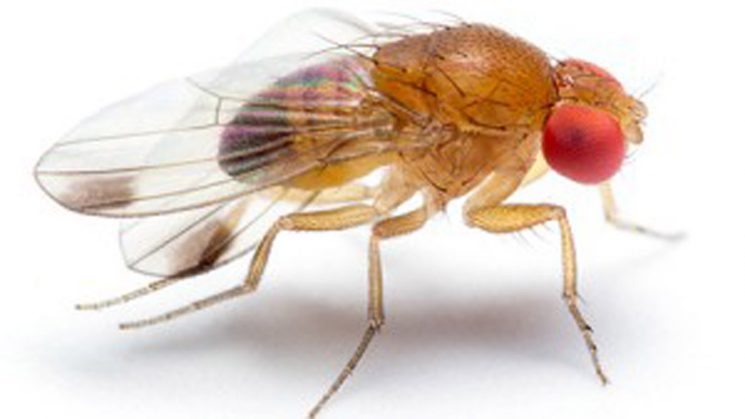
NC State has won a $6.7 million grant from the U.S. Department of Agriculture to undertake research and grower education efforts aimed at better managing a major new pest that causes hundreds of millions of dollars in annual agricultural losses.
Under the four-year specialty crop grant from USDA’s National Institute for Food and Agriculture, NC State University scientists will join with researchers and extension specialists from across the nation to conduct on-farm tests aimed at finding new ways of effectively dealing with spotted wing drosophila, a tiny fruit fly that’s been causing big problems since it was first detected in North America in 2008.
They’ll also develop tactics and tools for predicting risks from the pest, along with educational materials to help growers make the most economically and environmentally sound management decisions.
NC State’s collaborators in the effort are from Michigan State, Oregon State, Cornell and Rutgers universities, as well as the universities of Maine; Notre Dame; Georgia; California, Davis; and California, Berkeley; and the U.S. Department of Agriculture’s Agricultural Research Service.
Guiding the initiative is Hannah Burrack, an associate professor of entomology. Others from NC State who are participating in the project are Max Scott of the Entomology Department, Zack Brown of the Agricultural and Resource Economics Department, Rhonda Conlon of Extension Information Technology, and Dr. Jean-Jacques Debois of the Southern Integrated Pest Management Center.
Burrack explained that spotted wing drosophila, or Drosophila suzukii, lays eggs in such valuable soft-skinned fruit as raspberries, blackberries, blueberries, strawberries and cherries. The eggs develop into larvae, leaving the fruit unmarketable.
Marketers who buy fruit from growers to sell to grocery stores “have zero tolerance for spotted wing drosophila infestation in fruit,” Burrack said. “If they find a single larva in a fruit, the entire load from that grower will be rejected. Nationally, we estimate that these economic losses to growers on an annual basis are over $700 million a year.”
Spotted wing drosophila has been recognized as a pest in Asian fruits since the 1930s. “In just seven short years, it’s gone from initial detection in California to global-range phenomenon,” Burrack said. “It’s found everywhere we grow the crops it feeds on in North America, it’s widely distributed in Europe, and it’s been found in South America. That’s a shocking rate of expansion for a pest organism.”
Right now, Burrack added, growers have found only two ways of dealing with the insect: They use insecticides, or they cut their growing season short.
In the United States, insecticide use has grown in host crops by at least 30 percent in response to spotted wing drosophila’s threat, she said. “Some berry crops rarely received any insecticide applications during harvest, and now they may receive at least weekly insecticide treatments,” she said.
Still, even the best insecticide treatments may be rendered ineffective under adverse environmental conditions, such as rainy periods, she added. Not only that, spotted wing drosophila is such a prolific reproducer that scientists are concerned that the pest may develop resistance to the currently used treatments.
These are among the reasons that Burrack and others involved in the grant-funded project want to help growers reduce their reliance on insecticides for managing spotted wing drosophila.
“The economic impact is important. Berry crops and cherries are worth more than $4.37 billion annually in the United States and are grown on close to 42,000 farms. These crops are high value per acre, and for this reason, they are particularly important components of local-food systems,” she said.
“Our biggest goal is to have things return to a management program that is sustainable both economically and environmentally for our growers, where all the tools effective against spotted wing drosophila are being utilized, and pesticide use occurs only when absolutely necessary.”
This post was originally published in NC State News.